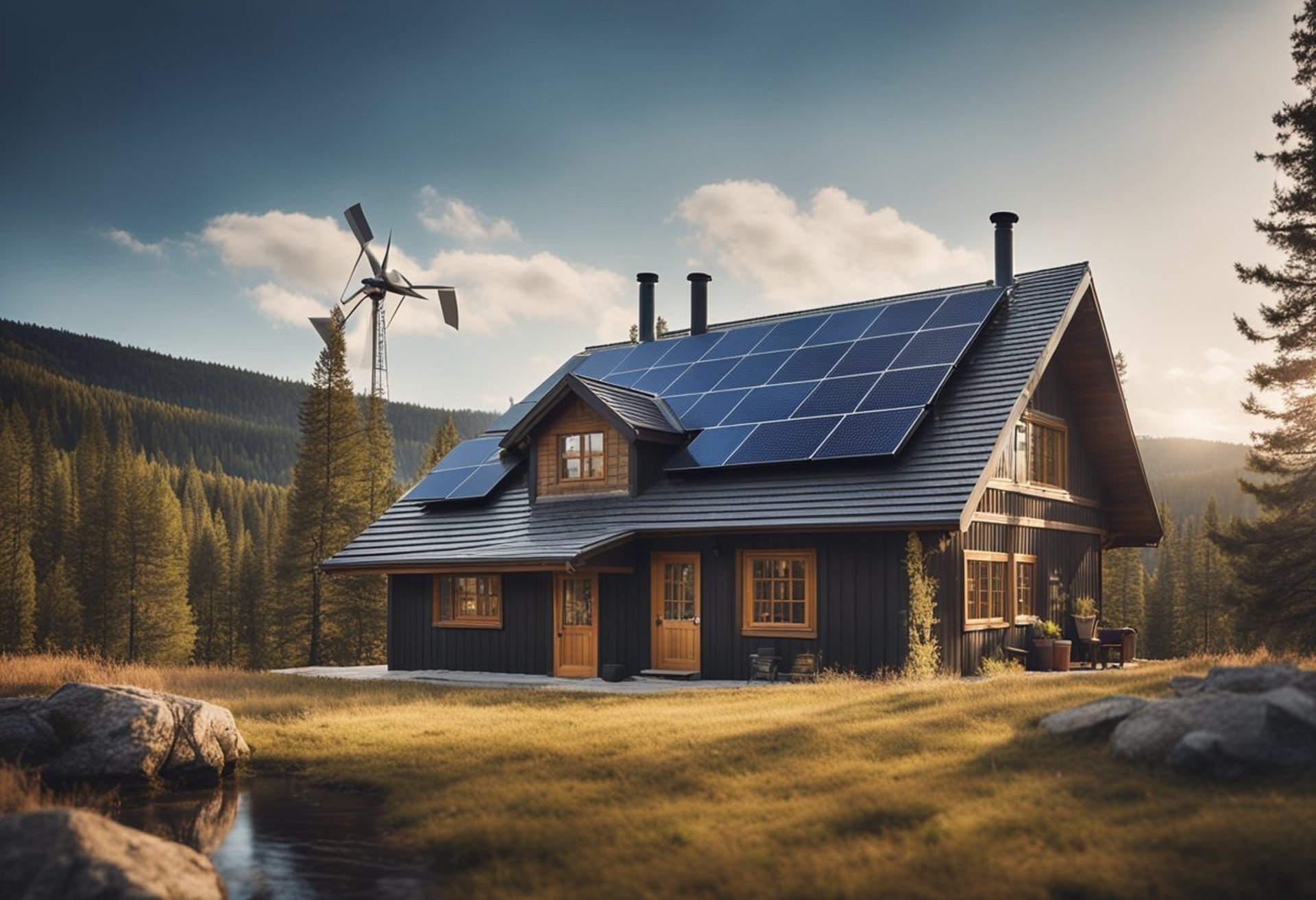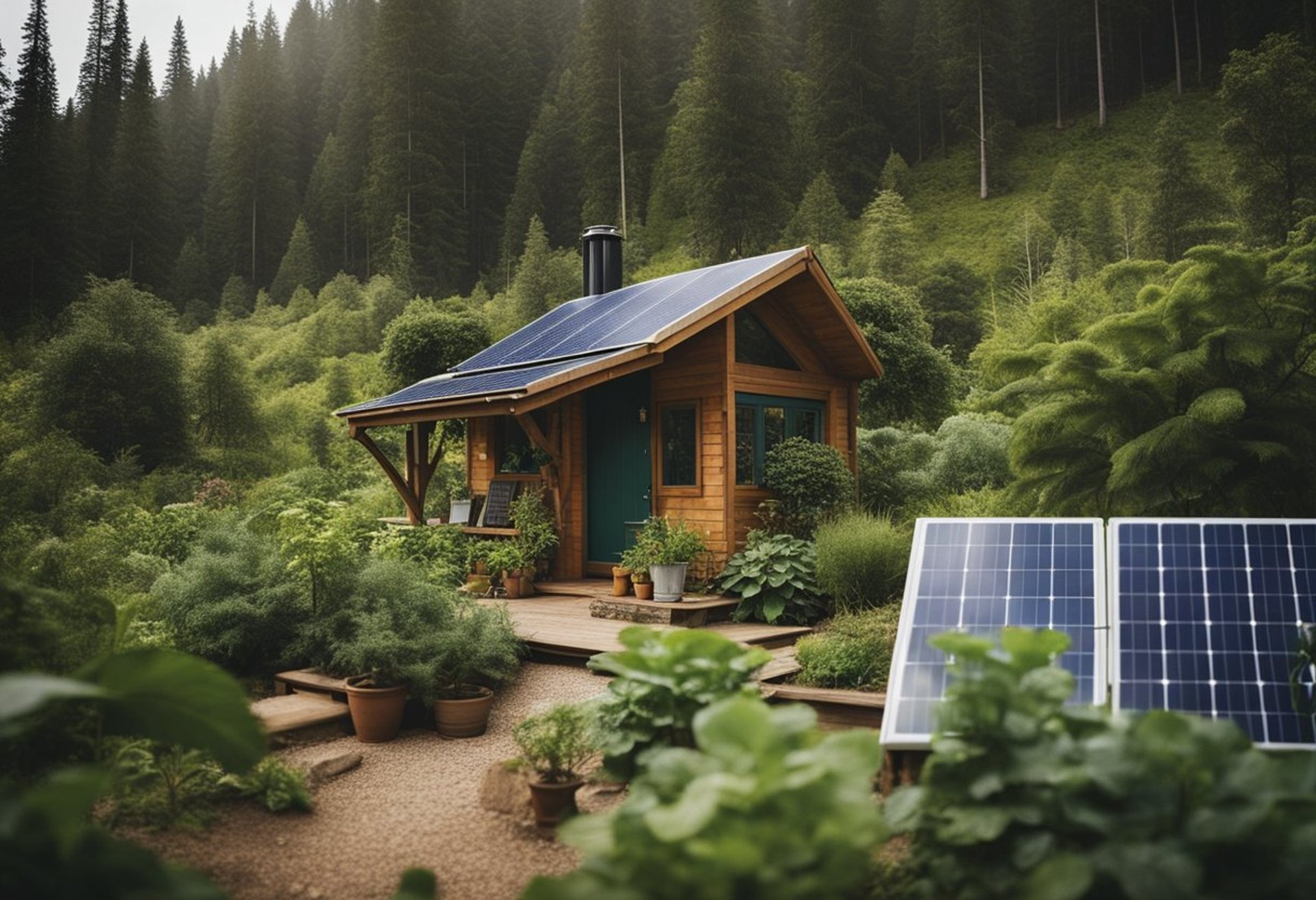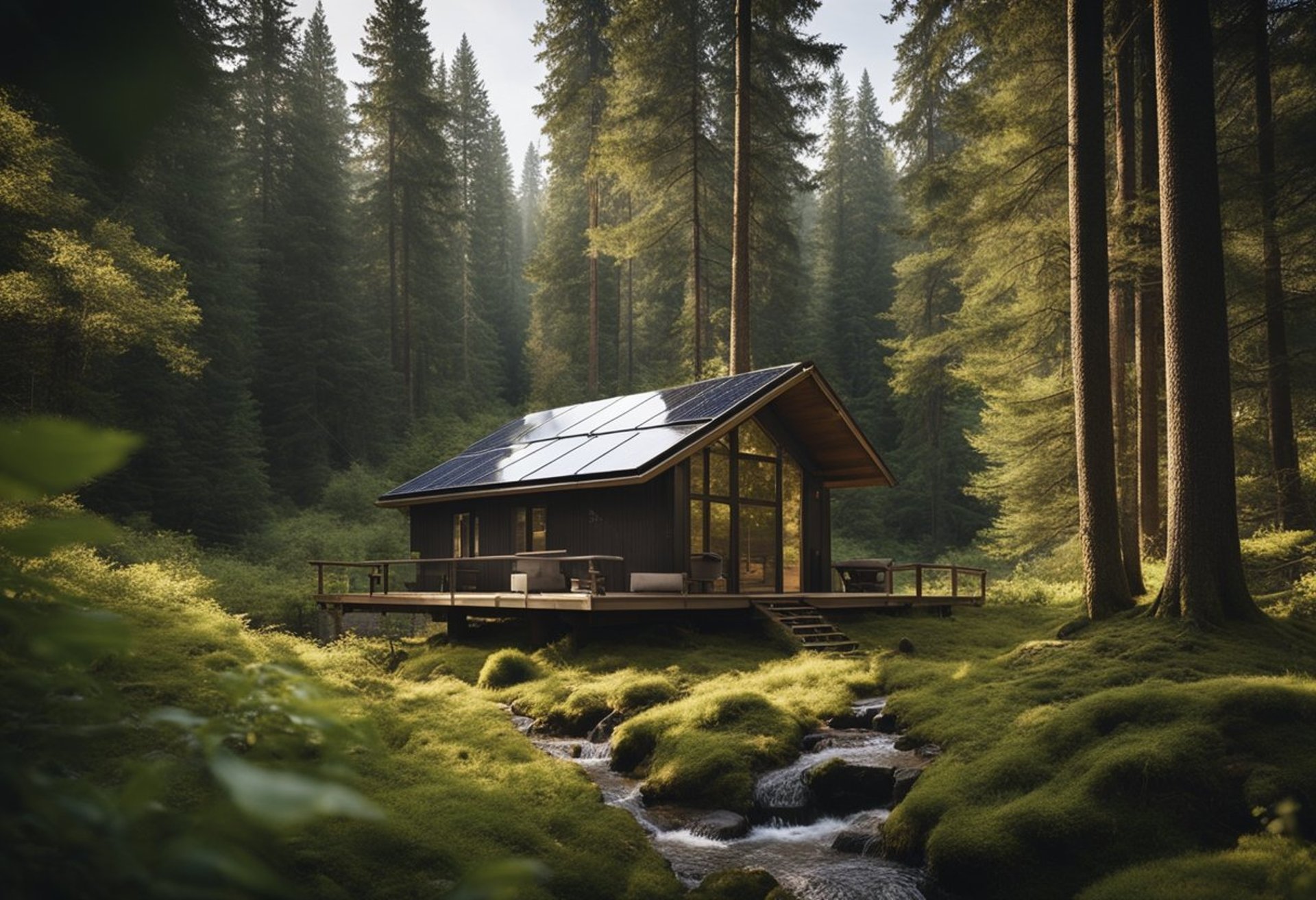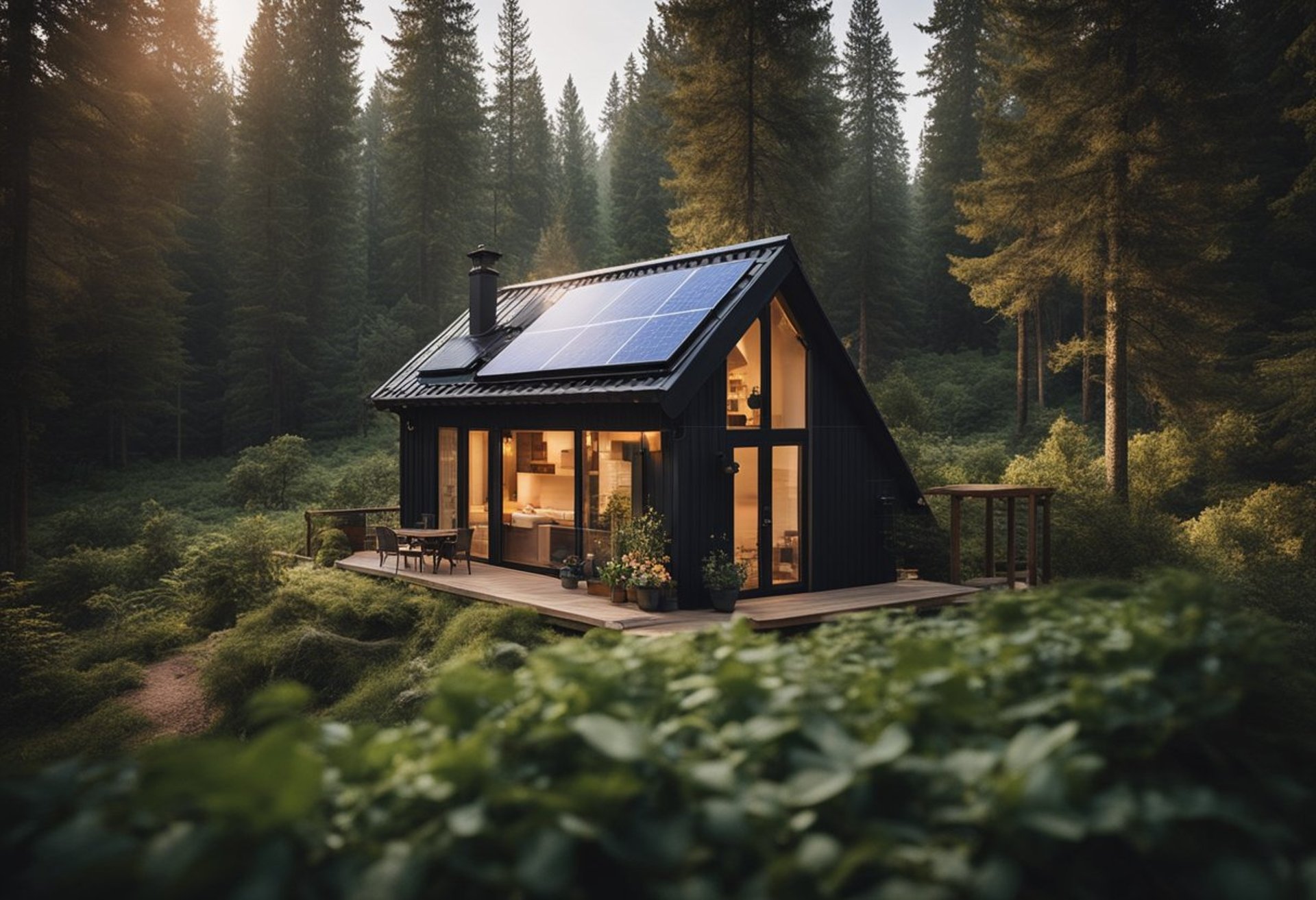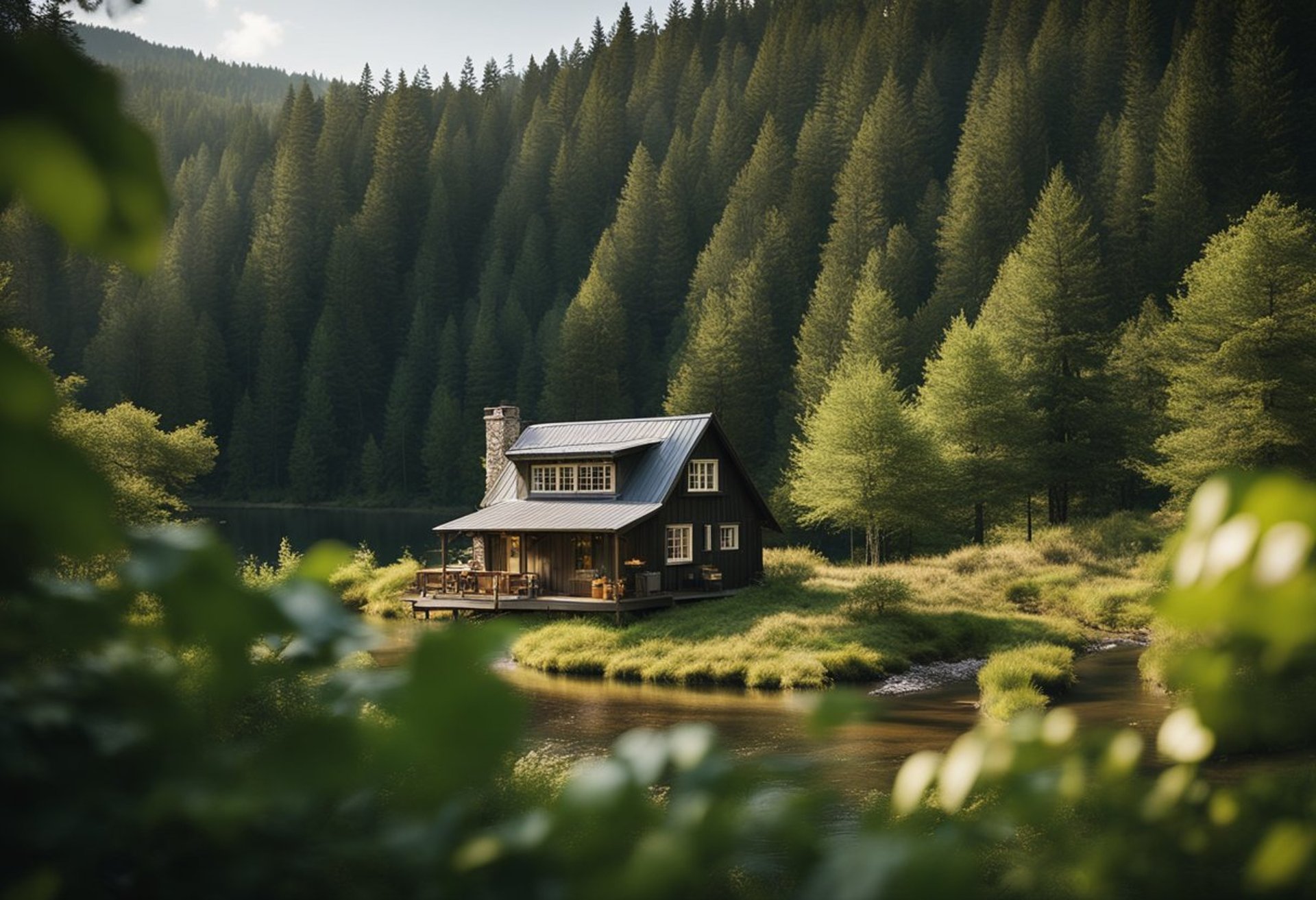Off Grid Cabin and Cottage Living Inspiration: Embrace Sustainable Simplicity
Embracing off-grid cabin and cottage living offers a unique journey toward self-sufficiency and simplicity. Finding inspiration in nature and sustainable practices can transform a dream of isolation into a fulfilling reality. Whether it’s building a rustic retreat or redesigning a current space, there are countless ways to create a harmonious off-grid lifestyle.
As people increasingly seek connection with nature and independence from modern conveniences, off-grid living presents both a challenge and an opportunity. Practical design elements, alongside innovative energy solutions, can significantly enhance the off-grid experience. This lifestyle encourages a mindset focused on sustainability and self-reliance, fostering deeper connections with the environment.
For those seeking inspiration, exploring various off-grid cabin and cottage designs can spark exciting ideas and ignite a passion for crafting a personal haven away from the hustle and bustle of everyday life.
Key Takeaways
Off-grid living promotes independence and sustainability.
Thoughtful design enhances the functionality of cabin and cottage spaces.
A focus on renewable energy can lead to a fulfilling lifestyle.
Essentials of Off-Grid Living
Living off-grid requires careful planning and consideration of essential systems. Sustainable energy, reliable water sources, and effective waste management are critical for a successful off-grid lifestyle.
Understanding Off-Grid Energy Solutions
Off-grid energy solutions are vital for enabling independence from traditional power grids. Solar panels are a popular choice, harnessing sunlight to generate electricity. They can be installed on roofs or as ground-mounted systems.
Wind turbines are another option, effective in areas with consistent wind. Combining both solar and wind can increase energy reliability.
Batteries store excess energy for use during low production times. Choosing the right inverter to convert DC power from batteries to usable AC power is also essential.
Regular maintenance of equipment ensures efficiency and longevity. He or she will need to monitor energy consumption closely to make necessary adjustments.
Water Collection and Purification
Secure access to clean water is fundamental for off-grid living. Rainwater harvesting systems capture precipitation from roof surfaces into storage tanks.
It is important to use first flush diverters to ensure the initial runoff, which may contain contaminants, does not enter the storage system.
Filtration and purification methods include UV light, carbon filters, and reverse osmosis systems. These processes eliminate pathogens and impurities, making the water safe for drinking and cooking.
Monitoring water usage helps manage resources effectively. Consider using low-flow fixtures to reduce consumption, contributing to a more sustainable lifestyle.
Waste Management Systems
Proper waste management is crucial in off-grid settings to minimize environmental impact. Composting toilets are a practical solution. They reduce water usage and convert waste into compost for gardening.
Graywater systems can recycle wastewater from sinks and showers, directing it to irrigation systems.
Regularly disposing of solid waste through local facilities or creating a burn pile for biodegradable materials is essential.
Storage systems for recyclables encourage sustainable living practices. Implementing these systems promotes a cleaner, more efficient off-grid environment.
Designing Your Off-Grid Cabin or Cottage
Creating an off-grid cabin or cottage involves thoughtful planning to enhance sustainability and comfort. Key aspects include maximizing natural resources, selecting eco-friendly materials, and efficient layout designs. These elements contribute to an enduring, functional living space.
Maximizing Natural Light and Heat
Natural light is crucial for reducing dependency on artificial lighting. Properly positioning windows can optimize sunlight exposure. South-facing windows can capture heat during winter, while overhangs help block summer sun.
Utilizing skylights allows for additional daylight, improving the indoor ambiance. Consider using triple-glazed windows for better insulation.
To enhance heat retention, incorporate thermal mass materials like concrete or stone. These materials absorb sunlight during the day and release heat at night, maintaining a comfortable temperature without additional energy use.
Choosing Sustainable Building Materials
Selecting sustainable materials is essential in off-grid living. Recycled wood, bamboo, and straw bales are excellent choices that minimize environmental impact. They offer durability and insulation.
Opt for low-VOC paints and finishes to maintain air quality. Indigenous stone can also be a sustainable option, reducing transportation costs and supporting local economies.
Solar panels should be mounted on durable roofing materials, which can withstand various weather conditions. Thermal insulation made from sustainable fibers helps reduce energy consumption.
Layout Considerations for Efficiency
An efficient layout maximizes space and minimizes waste. An open floor plan encourages natural airflow, reducing the need for heating and cooling systems.
Designate multi-functional spaces. For example, a kitchen can double as a dining and workspace. This approach minimizes material use and enhances convenience.
Consider the location of essential amenities like water, waste disposal, and energy sources. Positioning these elements thoughtfully streamlines daily tasks.
Incorporating built-in storage reduces clutter, optimizing living areas while adding functionality. Efficient use of vertical space with shelves also enhances the overall design.
Cultivating Self-Sufficiency
Achieving self-sufficiency in an off-grid cabin or cottage involves effectively managing food production and animal husbandry. Both aspects contribute to a sustainable lifestyle, reducing reliance on external sources.
Planning Your Food Garden
Designing a food garden requires careful planning to maximize space and yield. It is essential to assess sunlight, water access, and soil quality before planting. Raised beds can improve drainage and soil temperature.
Key considerations include:
Crop Rotation: Prevents soil depletion and pest accumulation.
Companion Planting: Utilizes natural pest control and enhances growth.
Seasonal Planning: Choose crops based on the local climate and growing seasons.
Utilizing organic methods such as composting and mulching enriches the soil and reduces weeds. A well-planned garden can produce vegetables and herbs throughout the growing season, ensuring fresh food availability.
Maintaining a Mini Livestock Farm
Raising small livestock, like chickens or goats, enhances food security and provides additional benefits. Chickens can supply eggs and natural pest control; goats offer milk and weed management.
Considerations for livestock management include:
Space Requirements: Ensure there is enough room for animals to roam and thrive.
Shelter Needs: Design weatherproof enclosures for protection from elements and predators.
Feed and Care: Establish a feeding regimen and learn how to manage health issues.
Integrating livestock into the off-grid lifestyle adds to the sustainability of the homestead, creating a closed-loop system where waste from animals can enrich the garden.
Integrating Renewable Energy Sources
Utilizing renewable energy sources is essential for off-grid living. By implementing solar, wind, or hydro options, individuals can ensure a sustainable energy supply while reducing their environmental impact.
Solar Power Implementation
Solar energy is a practical choice for off-grid cabins and cottages. Installing solar panels on the roof or in open areas maximizes sunlight exposure.
Key components include:
Photovoltaic Panels: Convert sunlight into electricity. Choosing high-efficiency panels can optimize energy production.
Batteries: Store excess energy generated during sunny days for use at night or cloudy days.
Inverters: Convert DC electricity from solar panels into AC electricity for household appliances.
The installation process generally involves securing necessary permits, assessing roof capacity, and determining system size. Regular maintenance, including cleaning panels and checking battery levels, ensures long-term efficiency.
Wind and Hydro Energy Options
Wind and hydro energy can complement solar installations for a robust off-grid energy system.
Wind energy details:
Wind Turbines: Harness wind to generate electricity. Placement is crucial; turbines should be positioned in open areas with high wind speeds.
System Size: Small turbines (400W-1000W) often suit cabins, while larger turbines may power more extensive setups.
Hydro energy details:
Micro-hydropower Systems: Suitable for properties near flowing water. These systems generate electricity using the movement of water.
Installation Needs: Evaluating water flow and securing water rights is essential for legal and effective setup.
By integrating these renewable energy sources, off-grid living can be efficient and sustainable.
Lifestyle and Mindset for Off-Grid Living
Off-grid living requires a shift in lifestyle and mindset. Building connections and adjusting daily routines are essential for a successful transition into this way of life.
Building a Community Network
Establishing a support network is crucial. Those living off-grid often rely on each other for resources, knowledge, and emotional support. This community can include neighbors, local farms, and like-minded individuals.
Benefits of a Community Network:
Resource Sharing: Access to tools, skills, and supplies.
Local Knowledge: Insights about the area’s climate and wildlife.
Emotional Support: Opportunities for social interaction.
Seeking out community groups or local meetups can foster relationships. Engaging with social media groups centered on off-grid living can also provide valuable connections.
Daily Life and Routine Adjustments
Adapting to an off-grid lifestyle involves significant changes in daily routines. Individuals must prioritize tasks such as resource management and sustainability.
Key Routine Adjustments:
Energy Management: Using solar or wind power requires planning energy use around availability.
Water Conservation: Collecting rainwater or using well water can change daily habits.
Food Sourcing: Gardening, foraging, or local farming shifts the approach to meals.
Incorporating flexible scheduling allows for seasonal adjustments. Emphasizing simplicity and self-sufficiency fosters resilience. Embracing these changes can lead to a refreshing lifestyle that promotes well-being and connection with nature.










